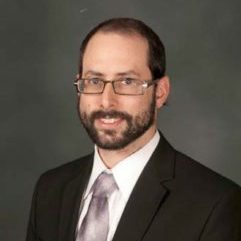Last year I had the privilege of traveling to Israel to attend the wedding of my brother Shalom and his wife Deena. I was honored to speak briefly at the wedding meal and shared the following words:
In Tehillim (84), King David speaks of Israel and particularly of the Bais Hamikdash (Temple) in terms of intense endearment. He says, “מַה-יְּדִידוֹת מִשְׁכְּנוֹתֶיך י-ה צְבָאוֹת, נִכְסְפָה וְגַם-כָּלְתָה נַפְשִׁי לְחַצְרוֹת ה: “Your dwelling places are like a good friend to me – Hashem; I yearn and I pine for Hashem’s courtyards.”
The usage of the word ‘Nichsefa’ or ‘kissuf’ to describe King David’s yearning is both interesting and unique. The commentaries understand it to mean that King David’s life was simply not complete without the Bais Hamikdash (temple). King David felt that he literally could not survive any longer without coming closer to Hashem by building a sanctuary to Him.
The Medrash writes that idea of Kissuf (intense yearning) applies to marriage as well. When a Chassan (groom) realizes that his life cannot go on without his kalla (bride), and a kalla comes to the realization that her life cannot continue without her chassan, that couple has experienced a very valuable type of yearning. The yearning of the chassan and kallah has the power to become the foundation of a very beautiful relationship.
During the first days of the month of Nissan Jews around the world refrain from saying tachanun in celebration of the inaugural sacrifices brought by the nesiim, the leaders of each tribe, to the Mishkan (Tabernacle).
Outwardly, the daily gifts of the nesiim look identical but the Medrash Rabbah tells us that each one of the nesiim had distinct and unique intentions when he offered his gift.
The nasi for the sixth day of Nissan was Elyasaf ben Deu’el of the tribe of Gad. Everything that he brought to the Mishkan was meant to symbolize an aspect of our redemption from Egypt and our entry into the land of Israel.
The very first gift that Elyasaf brought was a silver platter – a ‘kaaras kesef achas’. The Medrash reveals that this Kesef (literally, silver) symbolized the Kesef – the yearning – that existed between Amram and Yocheved, the parents of Moshe Rabbeinu. According to the Nasi of Gad, the marriage between Amram and Yocheved was the catalyst for the entire Exodus and, eventually, our entry into the land of Israel.
I gave my humble bracha to the chassan and kallah that the yearning, the ‘kisuf’, that brought them to their wedding day continue to grow and develop. The mutual appreciation and need that a bride and groom feel for each other is the beginning of many special blessings. Their relationship will surely play a role in alleviating some of the suffering in the world and, eventually, in bringing all of us to the land of Israel speedily in our days.
Just three days after sharing this idea at my brother’s wedding, I boarded a home-bound El Al flight out of Tel Aviv. My seatmate for eleven hours was a fellow named Amram who explained to me that he was not very religious. He had made a firm decision to marry a Jewish woman and was returning from a trip that he had made to Israel for the express reason of meeting a potential bride. The woman he met is more religious than he is and he hopes to rise to her level. We said Tefillas Haderech together as we took off and as as the plane inched it’s way across the Atlantic we had several discussions about G-d, Kashrus, and Eretz Yisrael. As the plane landed, I told Amram about my brother’s wedding and about the original Amram in Egypt. We discussed how Amram’s desire to marry Yocheved had been the first step in our long trek out of Egypt and into Eretz Yisrael. We shared a mutual prayer that the desire – the kissuf – of the Amram sitting next to me to marry the right woman and to grow spiritually would bring only great things for him and for his wife-to-be. Like the Amram thousands of years before him, he has the power to change the face of the Jewish people.
May we continue to share only Simchos.
Chag Kasher V’same’ach.
More on Pesach:

0 Comments